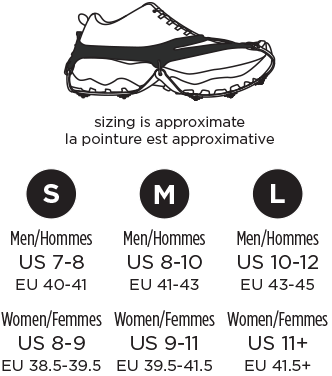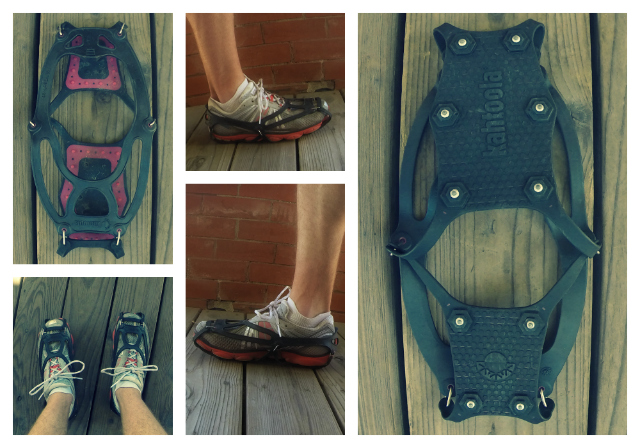We’ve had a crazy winter, making it extremely difficult to run. Just look at Boston, which broke its snowfall record with over 108 inches.
To put that in perspective, that’s more than NINE FEET of snow! Enough to completely cover your car or barricade your front door.
As someone who started running in a town northwest of Boston (and college in Connecticut), I’m familiar with winter running. The snow, sleet, buried trails, ice, narrow roads, and slippery surfaces can make running virtually impossible.
In 2004, I had a genius (debatable…) idea of putting heated wires in the woods near campus. They could be turned on to melt the snow and allow our team to enjoy the trails..
If anybody wants to partner on a Kickstarter project, let me know 😉
But seriously, running through the dark winter months is just the worst. During one hellish hill workout in 2007, I was wearing tights, pajama pants, three shirts, two hats, two pairs of gloves, and a scarf over my face when it was zero degrees and windy.
FML.
Back then, I was even more of a running gear purist. Besides a cheap Timex watch, I had no other gear. I didn’t even own a foam roller.
No Garmin. No sunglasses. No music. No metronome. No heart rate monitor. No water bottle. No dog. No shoe inserts. No phone. Nothing.
And while I still don’t consider myself a gadget junkie, I do have a few strategic pieces of gear that I now use, like:
- My Garmin 610
- Some occasional music
- A few pieces of home gym equipment
With the long trail runs I’m now doing at altitude (like the picture below from Golden Gate Park in Colorado), I’ve come to realize that a few extra pieces of gear are necessary.
#Colorado is beautiful. Almost makes me sad that I can’t run in the mountains ever day for two hours
A photo posted by Jason Fitzgerald (@jasonfitz1) on
I’ve invested in an Amphipod Hydraform handheld bottle, which I know will come in handy during 2-3 hour runs at 9,000 feet.
And recently after nearly pulling my groin slipping on ice while running around a sharp turn, I knew I need better traction during these Colorado winters.
Hide the kids… I’m wearing spikes!
A few weeks ago when it was particularly snowy here in Denver, I tested a pair of Kahtoola NANOspikes.
While normally I’d steer way clear of this type of gear, I needed them for safety reasons. And I was pleasantly surprised at their comfort and smooth ride. Maybe I’ve been overly harsh all these years on gear like this?
They have a low-profile and very small spikes, so they work incredibly well on hard-packed snow or ice. I wore them with 1-3 inches of snow on the ground and forgot I was wearing them until I heard the spikes clicking on the pavement in cleared areas.
Here’s what you should expect with the Kahtoola NANOspikes:
- 10 spikes per foot (six on the forefoot panel and four on the heel panel)
- Spikes are made from tungsten carbide, which doesn’t rust
- Weight ranges from 7.5 – 8.3 ounces depending on size (for the pair, so individually they’re quite light)
They come in small, medium, and large. Here’s Kahtoola’s sizing chart:

I wear a size 10 running shoe and got the large NANOspikes – and they fit perfectly.
Kahtoola NANOspike Q&A
I know a lot of questions pop up about niche products like this, so let’s dive into some Q&A.
How big are the spikes?
They’re actually quite small. The base (where the spike comes out from) is .125″ and the spike itself is .213″ making the entire device very low-profile.
It’s also important to understand that they NANOspikes aren’t technically spikes. As you can see in the pictures above, the spike has a flat end so you don’t have to worry about grinding down a point if you happen to cross any pavement.
What colors do they come in?
To paraphrase Henry Ford: “A customer can have any color NANOspikes he wants, so long as it’s black.”
I know, not the most “fun” color, but at least they work well.
You can get in touch with Kahtoola here if you want to suggest additional colors.
How do they feel when you run in them?
Surprisingly, quite comfortable! Since the spikes don’t create any pressure points and there are no “coils” (more on this below), there’s an even weight distribution underfoot.
I tested the NANOspikes several times in snowy and icy conditions and they worked great on hard packed snow and ice. In deeper snow (more than a few inches), you have plenty of traction but will still get your shoes wet.
I also had to run across some roads that had no snow and they felt fine on these harder surfaces as well. Sharper spikes would dull and then be less effective, but the flat design of Kahtoola’s traction product doesn’t have this problem.
You’ll hear the familiar “click-click” as you run on the road in these, which reminds me of my cross country days racing at Franklin Park in Boston, but they’re still comfortable than bigger spikes or coils.
What makes the Kahtoola NANOspikes different?
This is the main question I had before running in this brand of traction accessory. The most popular is arguably Yak Trax, so why not wear those?
One simple reason: Yak Trax uses metal coils that are looped over rubber bands on the underside of the product. This design may cause pressure points or an uneven weight distribution – and comfort is my priority.
Several reviewers on Amazon commented on this as well. Yak Trax don’t have an even surface on the bottom. But the NANOspikes offer a completely flat bottom with small spikes that sink into the snow. You don’t even notice them.
Coils can be unstable and uncomfortable, so you won’t see me wearing them. Plus, they often “unwrap” making them virtually useless.
I’ll stick with the Kahtoola NANOspikes, which I found to be more comfortable and just as effective.
Are they easy to put on your shoes? And do they STAY on while you run?
Yes. In fact, I worried about this before using them but was surprised at how easy I could stretch them over my running shoes. I put together this short video so you can get a feel for how they look:
I was hoping to get my daughter Reagan to help put them on, but she ran away. Next time!
A few things to note:
- The rubber on the sides and bottom is strong but flexible
- Don’t walk on wood while wearing these (stairs to your house, deck, hardwood floors, etc.). They will leave marks!
- If you run on roads that have been salted or sanded, it’s helpful to rinse the spikes after use to prevent degradation
Am I becoming a gear junkie…?
I now own (and love) a “winter traction device.” Does that make me a gear junkie?
Am I sliding down the slippery slope of needing my fuel belt, heart rate monitor, sunglasses, and compression socks just to go for an easy 30 minute run?
I don’t think so.
Remember, all of your running gear has a place and a purpose. Use them wisely as training tools to help you accomplish a specific goal:
- Minimalist shoes can help reinforce proper running form and build foot and lower leg strength.
- Trails can help build coordination, lower leg strength, and help the recovery process.
- And a pair of NANOspikes can help make winter running a little more bearable when you’re trying to run through snow and icy conditions.
Let’s keep the conversation going:
In the comments below, tell me your favorite “weird” piece of running gear that isn’t yet mainstream. Why do you love it?
And if you want to test out the Kahtoola NANOspikes yourself, the best price seems to be on Amazon.
